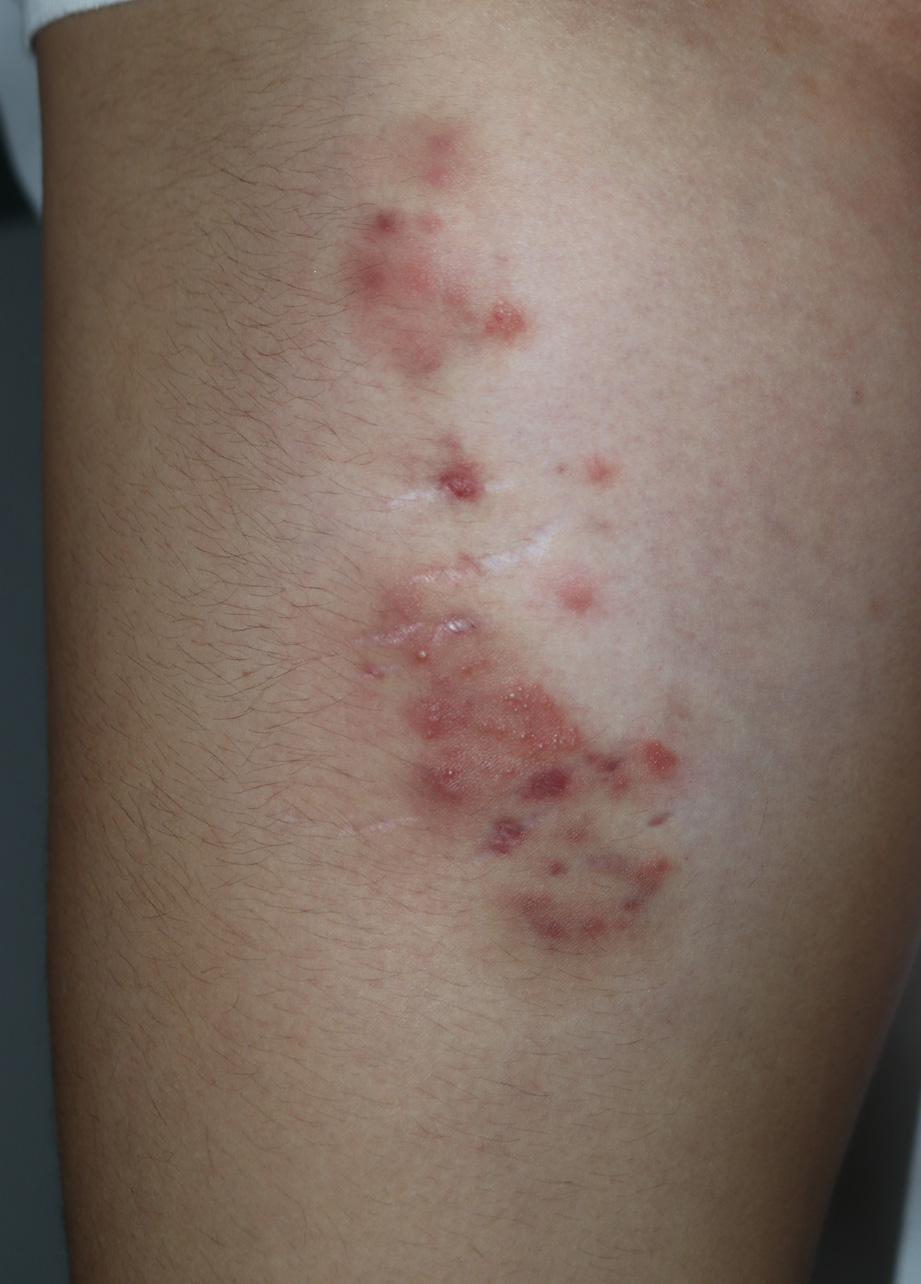Peripubertal acneiform nevus.

Downloads
DOI:
https://doi.org/10.26326/2281-9649.31.3.2269How to Cite
Abstract
Acne lesions with segmental or linear distribution are encountered more frequently in nevus comedonicus, which is usually present at birth or appears in the first years of life (1, 6), although the inflammatory lesions appear later, usually in adolescents. Linear or segmental acne lesions can also arise on Becker’s nevus and epidermal nevus; in these cases, acne lesions appear in adolescents.
Rare cases of linear acne lesions have also been described on apparently normal skin, in adolescents or young adults, but also before puberty (6) or even at birth (3). The sites affected are those of acne vulgaris, namely face and trunk. Therefore, even in cases of segmental acne lesions the pathogenetic factors such as the age and concentration of the sebaceous glands are the same affecting acne vulgaris; with regard to the latter factor, the lack of involvement of the scalp is not strange because occurring also in acne vulgaris.
However, in addition to the known factors that also act in acne vulgaris, it is interesting to discuss another factor, which is characteristic of these forms, namely the linear or segmental, unilateral distribution. The latter, together with the unusual localization on the forearm (6) or on a thigh (3), as in our case, and the presence sometimes at birth (3) suggests the presence in these cases of a mosaicism linked to a post- zygotic mutation.
Munro and Wilkie (5) first demonstrated in a form of segmental acne of the left arm in a teenager the presence only in the affected skin of a mutation of the fibroblastic growth factor receptor 2, which regulates cell proliferation and differentiation and is also present in the epidermis, hair follicles and sebaceous glands. The same mutation, if present in germ cells, is responsible for Apert syndrome, characterized by craniosynostosis and other bone alterations: children with this syndrome, when they reach puberty, undergo a severe form of acne that also affects unusual sites like the forearms. A superimposable case was then described by Melnik et Al. (4). Similar considerations can be made for the recent discovery by Levinsohn et Al. (2) of the responsibility of a somatic mutation of NEK9 in all 3 cases of comedonic nevus studied.
The interest of these reports also lies in the possibility of better understanding the pathogenesis of acne, its relationship with androgenic stimulation and with the activation of the fibroblastic growth factor.
The current case has been described for its rarity and for the exceptional involvement of a non-acne site such as the thigh.
